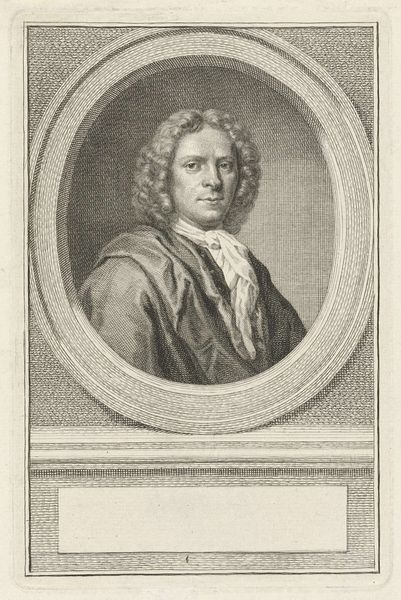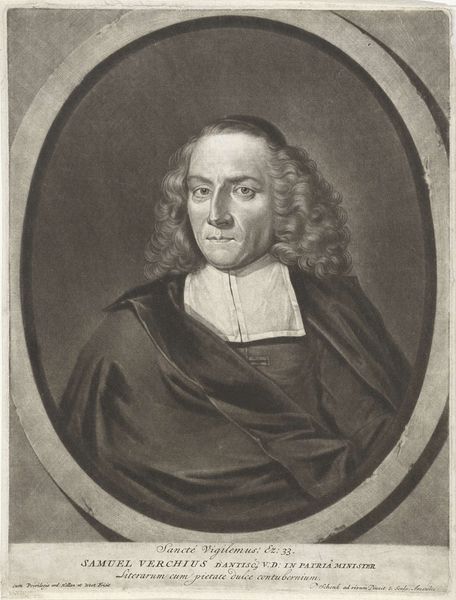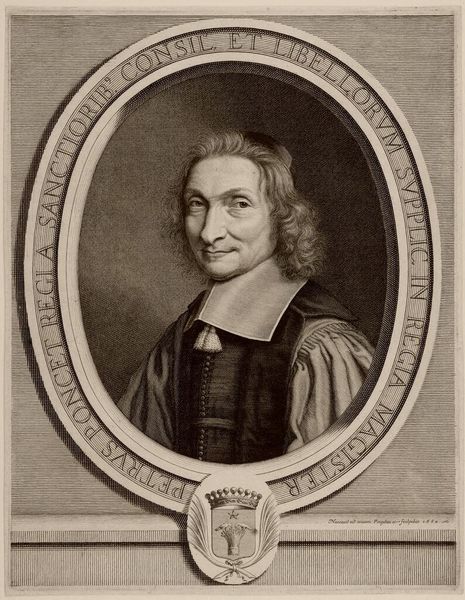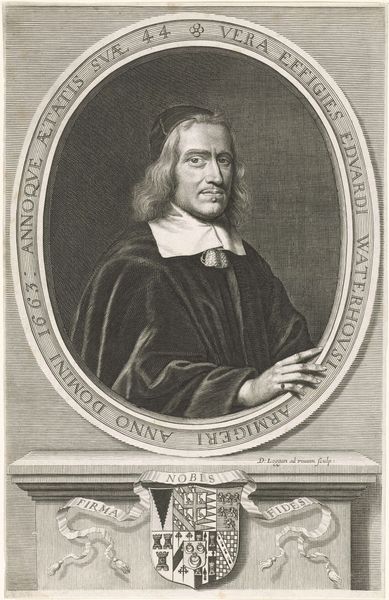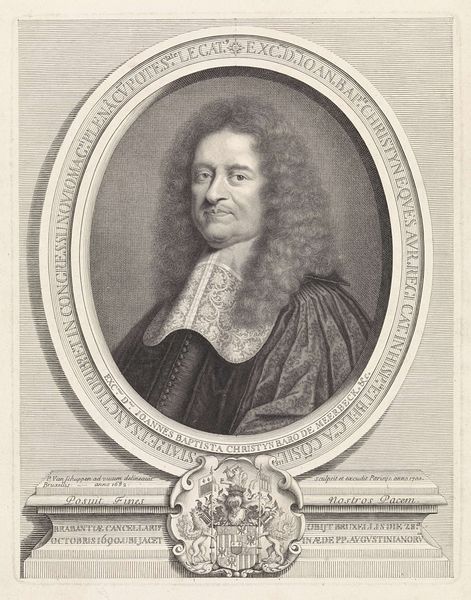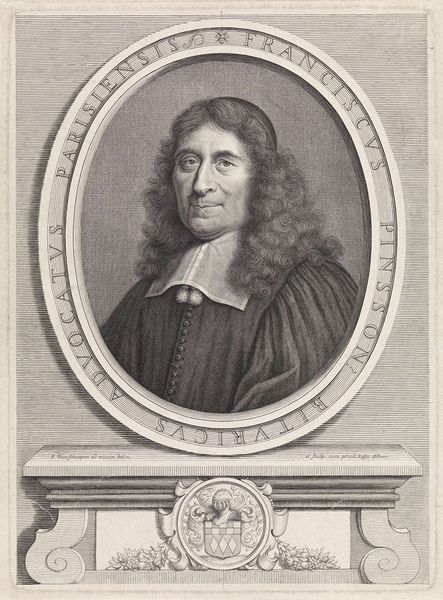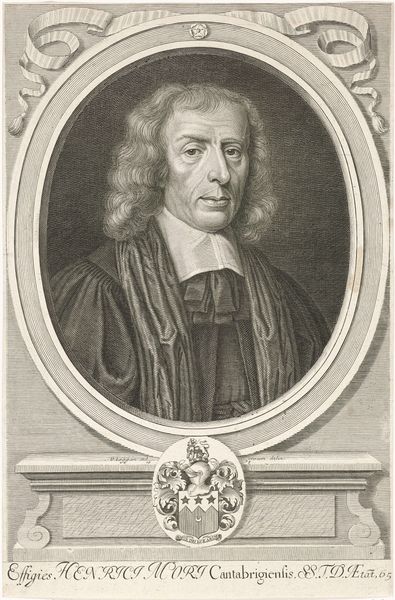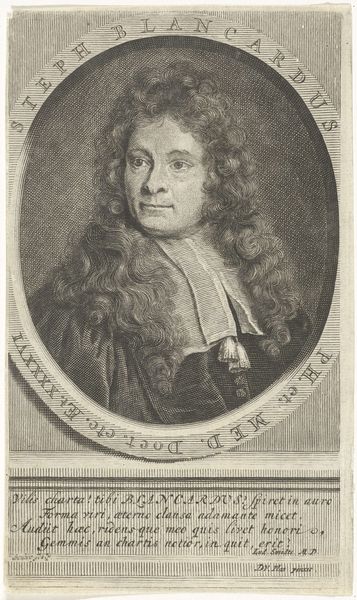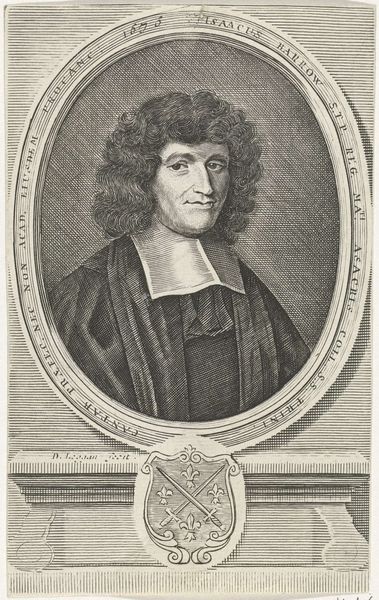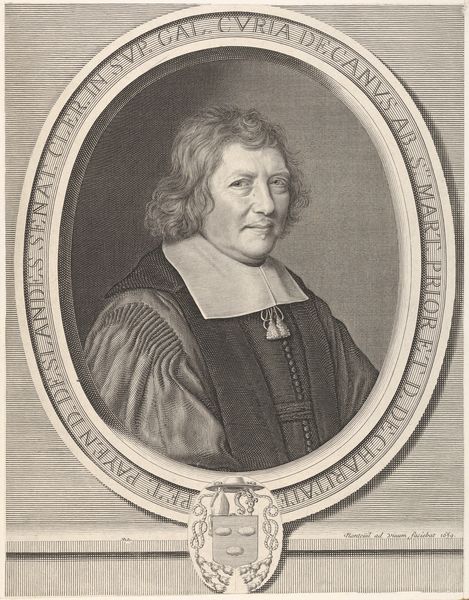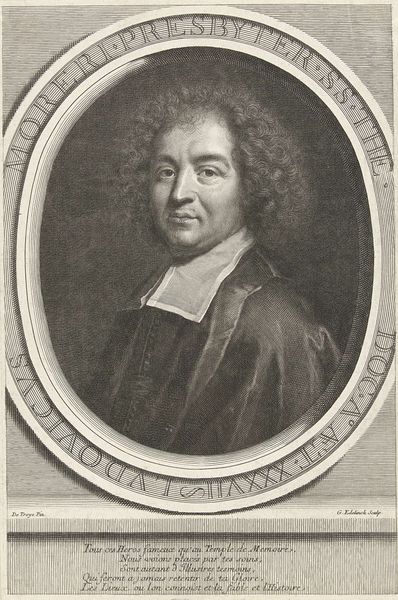
print, engraving
#
portrait
#
16_19th-century
#
baroque
# print
#
old engraving style
#
historical photography
#
19th century
#
history-painting
#
engraving
Dimensions: height 212 mm, width 154 mm
Copyright: Rijks Museum: Open Domain
Curator: I'm immediately drawn to the incredible detail in this engraving—it almost feels photographic in its precision. There's a quiet dignity radiating from the subject, a sense of restrained power. Editor: Let's delve into the history of this portrait. It's titled "Portret van Esprit Fléchier" and was created by Gérard Edelinck sometime between 1666 and 1707. This piece is held in the Rijksmuseum collection. The use of engraving as a medium offers us a great glimpse into the means of image production and dissemination in the late 17th century. Think about the labor involved, the deliberate marks made by the artist’s hand! Curator: Absolutely. Each line tells a story of dedication and skill. I’m curious, though, about Fléchier himself. He appears to be someone of considerable importance, judging by his attire and the overall formality of the composition. What was his position in society at this point? Editor: Esprit Fléchier was a bishop and a prominent figure in the French court, celebrated for his eloquent sermons. Understanding his societal role highlights how this engraving functions not merely as art, but also as a tool for constructing and disseminating images of power and authority. Notice the inscription—a crucial element for context, especially considering this print's time. Curator: A power carefully constructed and controlled, and a tool to communicate influence across different social circles. There’s something deeply human revealed in this meticulously crafted print. That delicate balance between conveying importance, and revealing inner life. Editor: And think about how the very act of reproducing his image through engraving—a readily distributable format—further cemented his presence and influence across France, shaping his legacy through accessibility and replication. Consider, too, how the materials used – paper, ink, and the engraver’s tools – facilitated this. It shifts how we see Fléchier; he wasn't just a bishop; he became a carefully produced and promoted public figure. Curator: It's a remarkable reminder that what we see as art is deeply interwoven with social and economic forces. Seeing it through that material lens, grounds the work in a powerful and relevant context. Thanks, that added another layer of richness for me! Editor: My pleasure, looking closely at the social role of material is the most enlightening thing about most work, once we shake of its aura as some precious mysterious item.
Comments
No comments
Be the first to comment and join the conversation on the ultimate creative platform.

